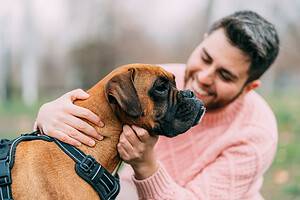When you first take your sweet puppy home, all you can think about is how precious they are. But then reality sets in, and they start chewing on your shoes, peeing on your favorite rug, and pummeling anyone who walks through the front door. Or maybe they just don’t listen no matter how many times you yell “sit” or “stay.” If you find yourself frustrated with any of those mentioned above, it’s time to learn how to train a dog. Learn all the must-know facts and top tips for turning your mischievous pup into a well-behaved family member.
Why Should You Train Your Dog?
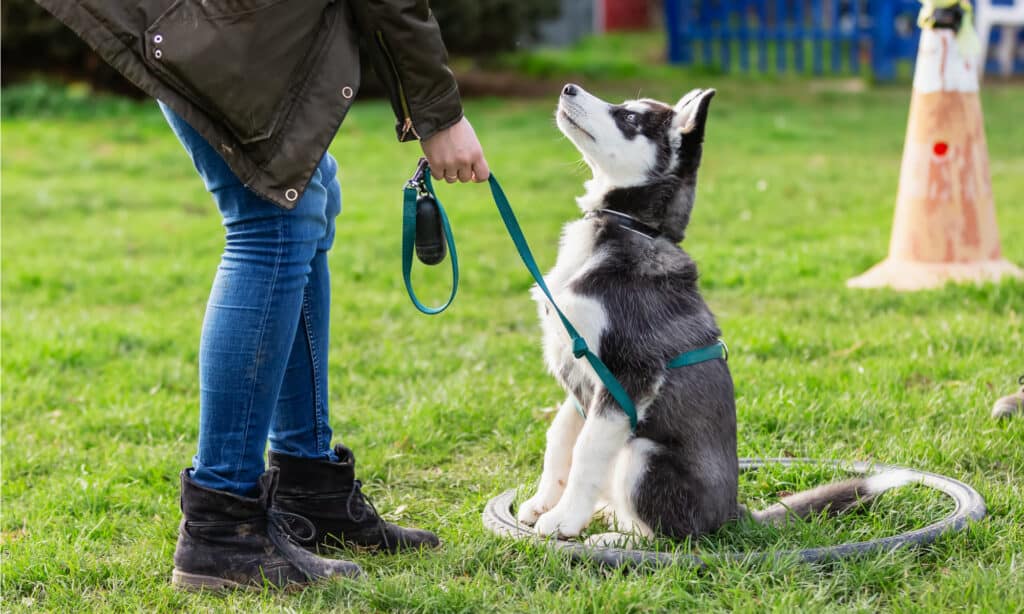
It is important to train your puppy, like this young husky. With the correct training, it is possible to stop your dog from howling at sirens!
©Christian Mueller/Shutterstock.com
Apart from not wanting your dog to pee on your furniture and bite your visitors, training a dog provides surprising benefits that can strengthen your and your pet’s bond. Despite what many believe, you can start training a dog at any age. So whether you have a new puppy that needs some manners, or an older dog that likes to bark at every passing squirrel, every breed and age can benefit from training. Dogs benefit from structure and actually become more confident when they know how to behave around their favorite humans. Plus, your vet will thank you for easy examinations! Training also provides a dog with mental stimulation, and the treats for being a “good boy” aren’t so bad either.
Top Tips For Training a Dog
- Before you begin your dog’s training session, ensure you are in an area without distractions. Your dog will focus better away from things that excite or stress them.
- Keep it light and fun. Be patient, and don’t worry if they don’t pick up on it right away. There’s always tomorrow!
- Don’t try to cram everything into one day. Break up the training into small regular lessons. Your dog is more likely to remember the steps if you are teaching consistently every day or week within a shorter period.
- End each training session with something they know how to do so they develop confidence. And be sure to give out rewards for their efforts!
- Studies show that dogs who are trained with a playful, reward-system approach respond and perform much better than those who are trained with a punishment-based system.
How To Train a Dog to Stop Barking
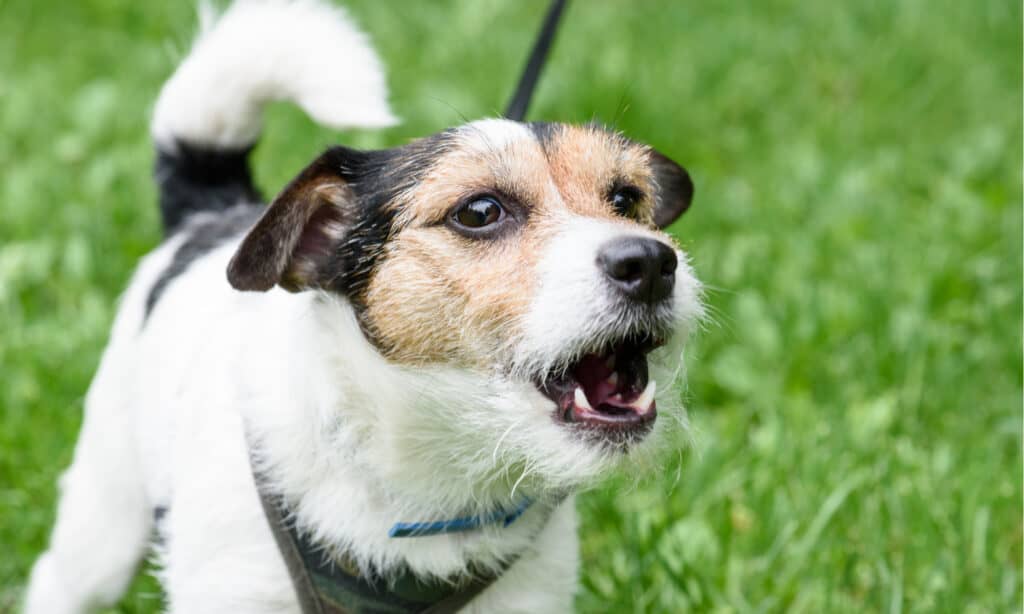
Teach the “quiet” command and don’t respond when your dog uses barking for attention.
©alexei_tm/Shutterstock.com
Excessive and nuisance barking is often a sign that your dog is not getting enough stimulation. If they are cooped up inside all day by themselves, they may be more likely to bark at every noise or unfamiliar sight. Ensure your dog gets daily outside exercise time and socialization. While you’re away, try leaving the TV on for background noise or providing stimulating puzzles and toys. Sometimes, our dogs bark at us for attention. Do you notice your dog barking when they want outside or need food? It might be instinctual to respond but don’t. Wait for them to be silent before you fulfill their needs. And finally, teach the “quiet” command. Say “quiet” in a firm, calm voice and reward them when they listen.
How To Train a Dog to Walk on a Leash
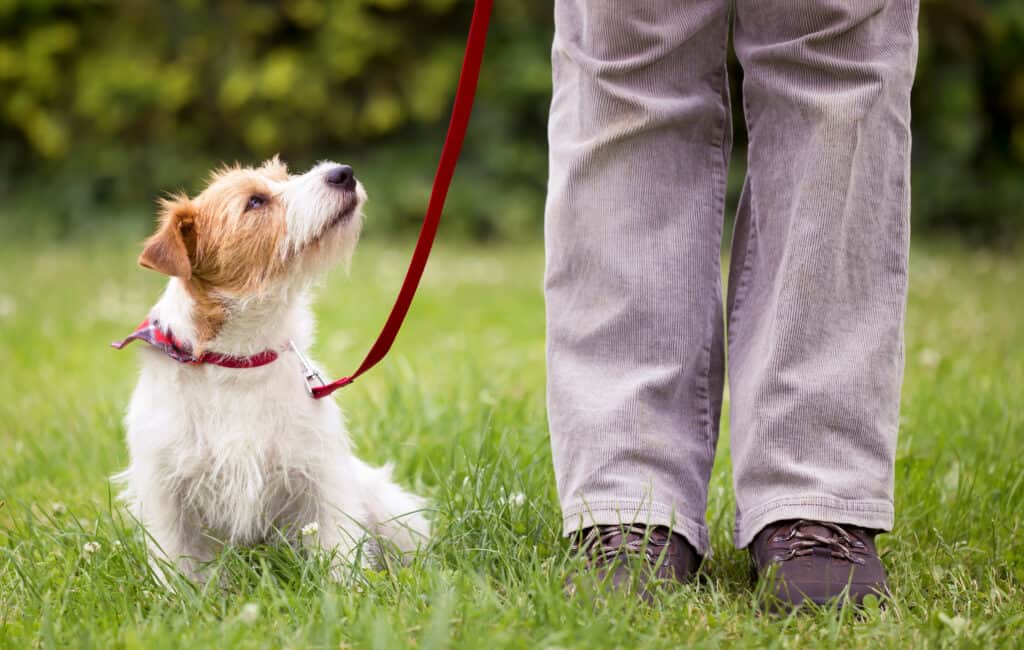
Due to leash laws across the country, walking on a leash is an essential skill your pup must learn.
©Reddogs/Shutterstock.com
Puppies have short attention spans, which can be difficult if you are trying to take them for a nice walk around the neighborhood. And since leash laws exist in most towns, walking on a leash is an essential skill your dog must learn.
Follow these steps to train your dog or puppy to walk on a leash:
- Before you go outside, let your pup get used to wearing his collar (or harness) and leash inside. Allow him to wear it for short periods every day while playing and eating treats. You want him comfortable and relaxed.
- While wearing the leash and collar, teach your dog a sound cue for food. You can pick the sound (whistle, cluck, etc.) and use it every time you are about to give him a treat. Once he picks up on your cue, back up a few paces as he is walking towards you and reward him when he reaches you. Continue doing this several more times, making him follow you for longer stretches.
- Once you feel he is ready, take him outside to practice. If you notice him getting distracted while walking on the leash, make your sound cue, wait for him to turn his head toward you, back up a few steps, and wait for him to follow you. Then give praise when he reaches you!
How To Train a Dog to Sit

Use dog treats and a clicker to teach your dog to sit.
©boitano/Shutterstock.com
For this next training session, you will need delicious dog treats and a clicker.
- While your dog is standing, hold a treat and slowly lift it over their head and back towards their rear. They should instinctively sit as they want their mouths closer to the treat. Once your dog sits, click your clicker and give them the treat.
- Once your dog gets the hang of it, try the same exercise without a treat. Close your hand (like you’re hiding food) and offer a treat with the other hand once he sits.
- After your dog begins reliably sitting with a treatless hand, start incorporating the word “sit” right before offering the treat. After a while, your dog will begin sitting with your hand and verbal cues alone.
How To Train a Dog to Pee Outside
- Puppies have smaller bladders and need to be offered bathroom opportunities every two hours, immediately after waking, and after eating or drinking.
- Use a leash to take them to the same spot to do their business every time and provide a sound or word cue before they go.
- Use a reward system, like praise, treats, and playtime, after they relieve themselves.
- Get them on a regular feeding schedule, so you can start to anticipate when they will need to go.
- Don’t give them water for at least two hours before bedtime. Most puppies can sleep for seven hours without needing the restroom. If they do wake, take them to their spot, taking care not to play or turn many lights on.
How To Train a Dog Not to Bite
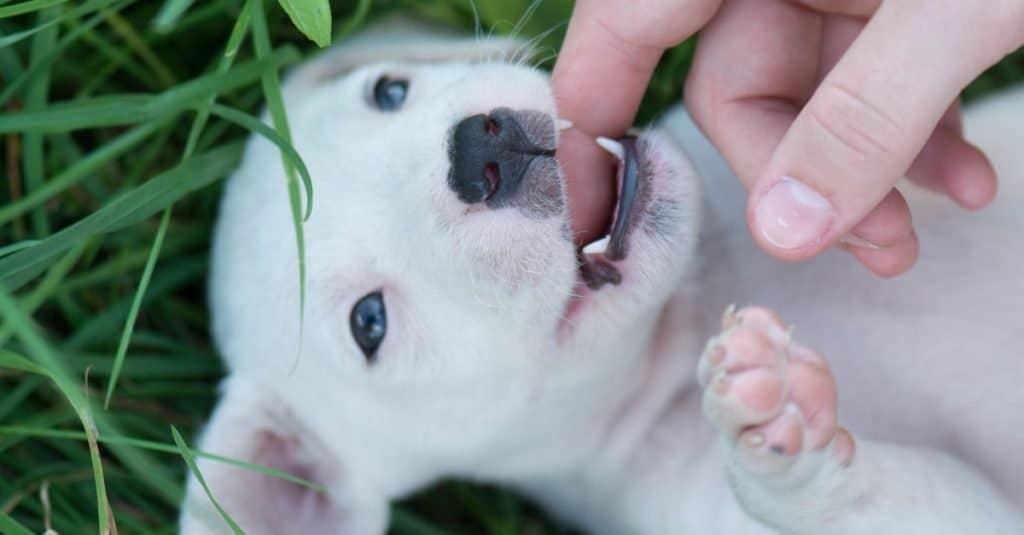
If your puppy likes to bite while playing with you, quickly end playtime and put them in a crate or other area where they know the fun is over.
©llaszlo/Shutterstock.com
Training a dog not to bite starts when they are puppies. Pups who learn bite inhibition are less likely to be adult dogs who bite. You can teach this by yelling “ow!” loudly when they bite or nip you. But bear in mind that some puppies get excited over this and want to keep biting. If you notice this in your dog, it’s best to quietly walk away or put them in their crate for “time-out.” If your dog backs off, be sure to praise them. You can also use a bitter spray to keep them from biting or chewing. If your puppy likes to bite while playing with you, quickly end playtime and put them in a crate or other area where they know the fun is over. Eventually, they will catch on and understand that biting and nipping mean “game-over.”
How Long Does it Take To Train a Dog?
Time frames for training will vary based on the skill desired. Learning to sit may only take a week or two before they master the command, while housetraining can take four to six weeks. Most of the training in this article will take at least four weeks before you can truly start to see results. But you must keep a regular and consistent schedule as it takes time for dogs to learn new routines. And above all, be patient. You may feel frustrated when you don’t see immediate results, but stay the course, dole out lots of praise, and you will begin seeing positive outcomes.
Up Next:
- Read the Best Dog Training Books: Ranked and Reviewed
- Can Dogs Understand English?
- How Much Does it Cost To Train a Service Dog?
The photo featured at the top of this post is © Christian Mueller/Shutterstock.com
Ready to discover the top 10 cutest dog breeds in the entire world?
How about the fastest dogs, the largest dogs and those that are -- quite frankly -- just the kindest dogs on the planet? Each day, AZ Animals sends out lists just like this to our thousands of email subscribers. And the best part? It's FREE. Join today by entering your email below.
Sources
- ScienceDirect, Available here: https://www.sciencedirect.com/science/article/abs/pii/S0168159111000876
Thank you for reading! Have some feedback for us? Contact the AZ Animals editorial team.




